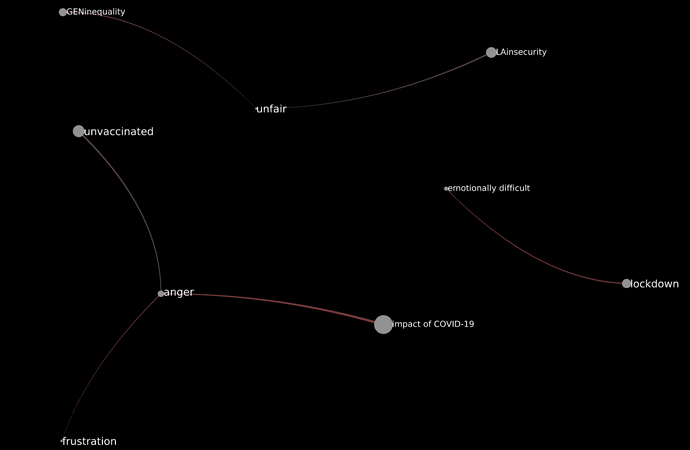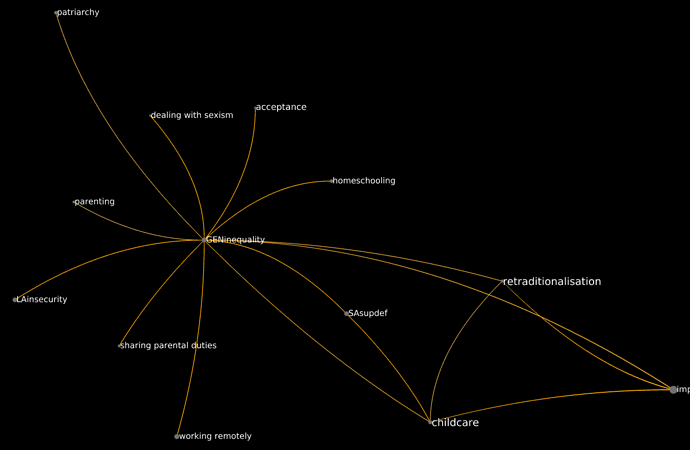I am starting from @Richard’s requests, as they seem the most likely to be in line with what Nica and Jan want to do, and the least likely to change again.
The highest value of d for which all three codes are still visible in the graph is 5.
Lowering d to 4 gives this:
anger and distrust are not co-occurring at this level of depth. They co-occur only once, in the interview to a female participant.
Note that the co-occurrence between unfair and sharing parental duties has breadth 1, which means only one informant supports it. The others have breadth 2 to 4.
These codes are quite tightly clustered together. All four appear in the graph until d >= 12, where they are connected to one another and to impact of COVID-19 (not shown). For a richer visualization, here’s what happens at d >= 6:
Conceptually, it’s the same. These codes co-occur each other, and three of them co-occur with impact of COVID-19. Two also co-occur with SAsupdef. Also, this is a very female debate… but then this is true of the German corpus in general. The edges involving acceptance and sharing parental duties are supported by only one informant each. The others go from 2 to 14 (! Mr. 14 would be the edge between GENinequality and impact of COVID-19.
These codes are again quite robust, and all three appear up to d >= 9. At d >= 6 it looks like this:
Again, several edges have breadth = 1. If we exclude them, we also drop from the graph the following codes: discrimination, government response, infection rate, lack of vaccinations, civil rights, injustice, and SIbureaucratization.
Here there is a bit of a problem, because the corpus has two codes that look like they should be the same.
Ignoring for the moment mistrust, here is what I get at d >= 6:
Six of these edges are supported only by a single informant. They involve education system, pandemic, children, children development, respirators/face masks and anti-COVID measures.
I can invalidate this statement with two words: Deutsche Bahn. 




